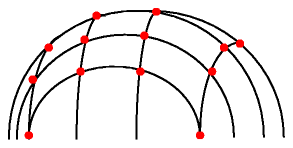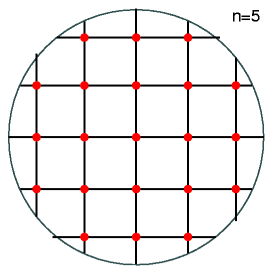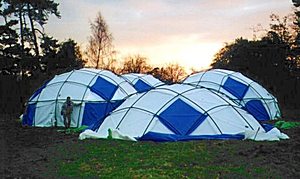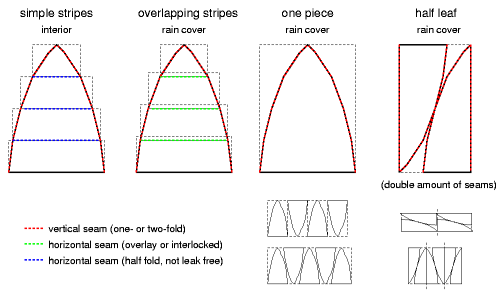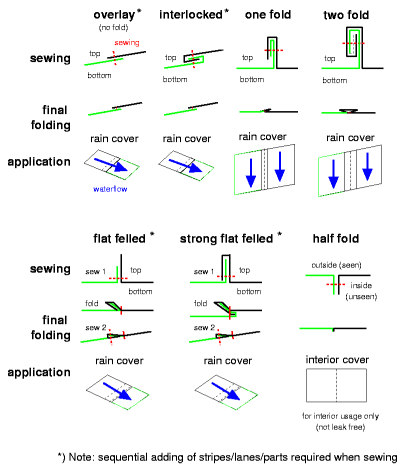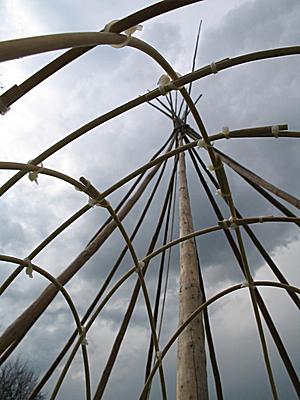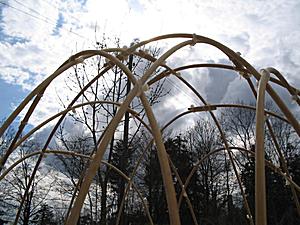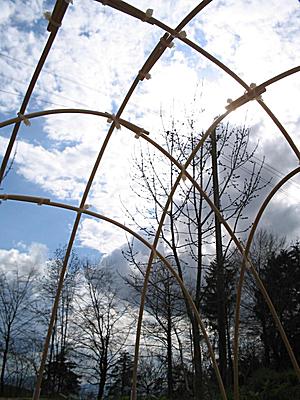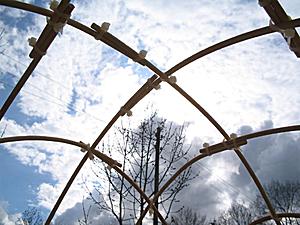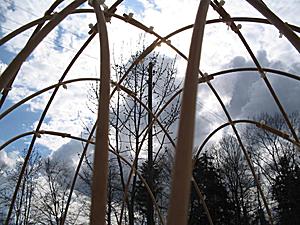
|
Wigwamwritten by Rene K. Mueller, Copyright (c) 2006, last updated Tue, December 9, 2008
Construction
Wigwam CalculatorEdit the nbows which is the amount of bows vertical or horizontal, and diameter of the wigwam d:
Sewing the CoverIn order to sew these leaf-like sphere surface together as rain cover, the water leak is particular to be avoided and so special care of how to sew the seams together:
In case of the wigwam a combination of two of the options might be used:
Consider to seal the stitching holes from sewing with silicon or good clear tape for canvas (with threads) and preferable use water-resistant sewing thread as well. For sake of ventilation you may leave a 10-20cm large hole at the top of the leaf composed roof canvas, so the hot air at summer can leave the inner of the wigwam. Use a 30cm x 30cm top canvas lay over that hole, either attached with cords to the outer skeleton of the wigwam, or if the poles are inside of the cover, use klett like fixation for the top canvas cover. Wigwam ModelI did a quick test with rather stiff bamboo sticks (40cm long, 4mm diameter), that's why the model looks not as filigree as with more flexible bows, n = 5, d = 50cm:
Consider to check the bow dome section as well, where a larger model of a willow bow dome with wigwam-like (interwoven sticks) finish is documented. Links
.:.
|
| Home | · | About | · |  Tipi | · |  Yurt | · |  Dome | · | Features | · | Gallery |

Creative Commons (CC) BY-SA-NC 2005-2017, developed, designed and written by René K. Müller
Graphics & illustrations made with Inkscape, Tgif, Gimp, PovRay, GD.pm
Web-Site powered by FreeBSD & Debian/Linux - 100% Open Source

